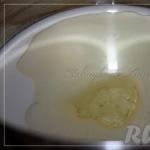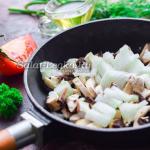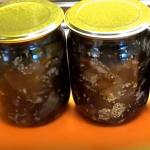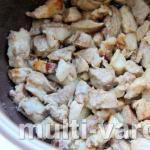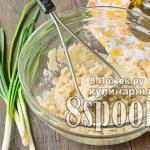Specialization: facade finishing, interior finishing, construction of summer houses, garages. Experience of an amateur gardener and gardener. We also have experience in repairing cars and motorcycles. Hobbies: playing the guitar and many other things that I don’t have time for :)
Everyone has heard about the presence of low-quality building materials on the market that are harmful to health. Therefore, the issue of choosing environmentally friendly coatings has become very relevant, in particular, many people are trying to purchase the most environmentally friendly wallpaper for their walls, but which canvases should be preferred? Next, I will try to answer the question posed and tell you which trellises are the most environmentally friendly.
What does “eco-friendly trellises” mean?
First of all, I would like to note that it is not entirely correct to talk about which wallpapers are environmentally friendly. The fact is that all wallpapers comply with certain standards and do not cause harm to health, unless, of course, they are of high quality and certified.
Therefore, the main rule when choosing environmentally friendly materials, any of them, is not to chase the price, but to purchase products from famous manufacturers in large stores. In this case, it practically does not matter what material they are made of.

But when buying second hand, even the most seemingly safe paper trellises may turn out to be harmless.
But when most people talk about eco-friendly trellises, they mean canvases made from natural materials, and not just those that meet safety certificates. Therefore, next I want to tell you about four types of such wallpaper.

Types of eco-friendly trellises
So, we can say with confidence that the most environmentally friendly trellises, if we talk about materials, are the following:

Below we will take a closer look at all types of these trellises.
Option 1: paper
Eco-friendly, breathable paper wallpaper needs no introduction. They are well known to everyone since Soviet times. True, since then the trellises have undergone some changes:
- Modern printing technologies have made them much more attractive. Often with their own decorative qualities they are not inferior to more expensive analogues;

- So-called duplex trellises have appeared on sale, which are characterized by increased density and wear resistance.
The main advantage of paper trellises is their low cost. But durability, of course, leaves much to be desired. In addition, they are very afraid of moisture.
To increase durability and moisture resistance paper wallpaper, they can be varnished.

Option 2: non-woven
Many people question the environmental friendliness of non-woven wallpaper, but is there a reason for this? This material is made on the basis of cellulose fibers and is usually modified with polyester. In other words, it is a paper-like material.

As for polyester, i.e. synthetic components, then there is no need to worry. This material is now often used to make clothes, bedding, etc. The only thing, do not forget what I said at the beginning of the article - environmental friendliness largely depends on the quality of the wallpaper.
Non-woven fabric itself is an environmentally friendly and breathable material. Therefore, you should not avoid it.

Advantages. Among positive qualities non-woven coverings, we highlight several main ones:
- Strength and durability. With these properties, these trellises are significantly superior to their paper counterparts;
- Moisture resistance. Of course, the coating cannot be washed with water, but nevertheless it tolerates moisture much better than paper;

- Attractive view. As a rule, the material is deeply embossed, as a result of which it looks very interesting.

Flaws:
- Should not be used in wet areas. As I already said, linens cannot be washed, so you shouldn’t use them for bathroom walls;
- Textured surface. This leads to dust accumulation on the walls. True, not all types of this coating have deep embossing.

Option 3: fabric
For residential premises great solution are fabric trellises. They can be made of linen, silk, jute and other materials. The only thing is, if you want the coating to be truly natural, pay attention to the absence of synthetics in the composition.

Advantages. The canvases have the following positive qualities:
- Design. The trellises have an elegant appearance;
- Abrasion resistance. The surface covered with them can even be cleaned with a brush.

Flaws:
- High cost. Fabric wallpapers are more expensive than all of the above analogues;
- Instability to moisture. The fabric quickly absorbs water, so this coating is not suitable for wet rooms;

- Stains are difficult to remove. It is very difficult to remove dirt from fabric, especially fat.

Option 4: cork
If all of the above coatings require careful treatment, then bamboo eco wallpaper for walls is absolutely undemanding in terms of operating conditions. They can be used in the kitchen, bathroom or even on the balcony.

Advantages. Other advantages of the material include:
- Durability. Since the coating is not afraid negative impacts, it can last for many years;

- Heat and sound insulation properties. Cork is a soft porous material, so it can even insulate walls to some extent;
- Practicality. Cork sheets are not difficult to wash with your own hands.

Instructions for gluing bamboo wallpaper has its own characteristics. Therefore, before you begin installing them, read the recommendations from the manufacturer.
The only disadvantages include a peculiar appearance cork cloths. Therefore, they are not suitable for every interior.

Price
Finally, I will give the cost of all the above coatings:

The prices in the table are valid for winter 2017/2018.
Conclusion
We have familiarized ourselves with the popular options for eco-friendly wallpaper and their types, which will certainly help you decide on their type. Finally, watch the video in this article. And if you have any difficulties with your choice, write comments, and I will be happy to help you with advice.
December 11, 2017If you want to express gratitude, add a clarification or objection, or ask the author something - add a comment or say thank you!
One cannot but agree that wallpaper remains the most sought-after and popular material for interior decoration walls All more people are currently paying attention to ecologically safe wallpaper , because everyone would like to be sure that they do not contain harmful ingredients and are safe for health.
Today we will look at environmentally friendly wallpaper for the bedroom, because we spend quite a lot of time in this room and not only while sleeping. Despite the emergence of many various materials For
finishing, environmentally friendly materials are in increasing demand. Eco-friendly wallpaper is perfect for children, allergy sufferers and anyone who cares about their own and their family’s health.
1) Paper wallpaper
Paper wallpaper is the most environmentally friendly wallpaper for the bedroom and other living spaces. It has the ability to “breathe” and is very affordable. Today, wallpaper manufacturers offer more advanced options - these are multi-layer paper wallpapers and with relief embossing. They have the same qualities as the simplest paper wallpaper, plus they are more durable and resistant to use. Wallpaper with relief embossing makes it possible to more elegantly decorate the interior of rooms such as a bedroom or living room.
2) Plant wallpaper
Natural and completely safe materials based on bamboo, jute, and plant fibers. Regardless of outside decorative covering, used at the base paper web. Just like simple paper wallpapers, vegetable wallpapers have the ability to “breathe” and have higher durability. The only drawback is that it is more high price, because they are made by hand.

3) Textile wallpaper
Textile wallpaper They are made from natural fabrics and synthetic ones, the latter, by the way, reduce the environmentally friendly qualities of the material. Cotton fabrics have good environmental characteristics,
viscose, silk. This option as environmentally friendly wallpaper for the bedroom is simply ideal. A room with them acquires not only the original surface of the walls, but also such useful qualities as antistatic and hypoallergenic.

4) Eco-friendly wallpaper glue.
To ensure that wallpaper does not lose its environmentally friendly properties, you need to use certain compositions that will not only provide good adhesion to the surface, but also preserve their positive characteristics.
When choosing environmentally friendly wallpaper adhesive, pay attention special attention for those compounds that are labeled as environmentally friendly and, of course, follow the recommendations of the manufacturer itself.
By using environmentally friendly wallpaper, you provide yourself and your family with comfortable and safe living and preserve their health.
Creating environmentally friendly products is the fashion of the twenty-first century. It has spread to many areas. This is how the wallpaper from natural materials. There are many of them on the market, and there is a high risk of making a bad purchase.
Eco-friendly wallpaper for walls
To avoid mistakes, it is better to read in advance about the properties of the product, study the manufacturers’ labels indicating quality, and remember the elements that are unacceptable in the composition. You can learn about the intricacies of operation by reading the article.
Eco wallpaper for wall decoration: characteristics, differences
Made from natural raw materials: wood, silk, papyrus, etc. Hence their properties: safety, strength, vapor permeability, thermal insulation. More details about each characteristic:
- 1) Natural materials practically do not emit hazardous substances. Some of them kill harmful microbes, that is, they are antiseptics.
- 2) Cork, bamboo and fiberglass wallpaper due to high density raw materials are durable and moisture resistant. This explains their durability, practicality, and versatility.
- 3) Paper, wood and other natural raw materials allow steam particles to pass through pore channels, which ensures air exchange. This reduces the risk of mold growing on the walls.
- 4) Natural materials - heat insulators. Eco wallpaper keeps the room warm.
Eco wallpapers differ among themselves in material (paper, wood, bamboo, papyrus, silk, non-woven fabric), complexity of the pattern, and additional applications (fireproof and other impregnations).
 You need to take your choice seriously. Purchasing a low-quality product will be a waste of money. Here are four points to guide you:
You need to take your choice seriously. Purchasing a low-quality product will be a waste of money. Here are four points to guide you:
- 1) The first is the presence of markings.
- 2) The second is a quality certificate, which also indicates the composition of the product.
- 3) Third - physical properties. Acrid odor, weak strength, which can be tested in a simple way(run your fingernail across the surface), talk about poor quality goods.
- 4) Finally, the fourth guideline will be the price: you should not save. Otherwise, there will be even more costs in the future.
U domestic producers- this is “Leaf of Life” or “Eco Material”, goods from Scandinavia are labeled with the “White Swan”, from Germany - with the “Blue Angel”, and other countries of the European Union - with the “EU Flower”, from the USA - with the “Green Sign”, and from Canada – “Ecological choice”, from Japan – “Eco sign”.
Range overview
 The market for eco-friendly wallpaper made from various materials is discussed below:
The market for eco-friendly wallpaper made from various materials is discussed below:
- 1) A wide selection of paper wallpapers from the companies As Creation (Germany), Eco Wallpaper (Sweden), MOF (Russia), etc. Breathable, but not very practical and short-lived. Water ingress causes irreversible damage. unpleasant odors absorbed. The price varies depending on the complexity of the design: 100 - 7,000 rubles or more for a ten-meter roll.
- 2) Hypoallergenic textile wallpaper. The raw materials for them are silk, viscose, cotton and other natural fabrics, as well as synthetic interlining. In Russia they are represented by manufacturers from Sweden (White & Light, Tweed), Italy (Cristiana Pasi / Parata) and other countries. The price varies from 700-1000 rubles to 25,000.
- 3) They retain heat, provide sound insulation, and wallpaper made from plant fibers is distinguished by its durability and beauty. Can be done manually. These are expensive. But on average the cost plant wallpaper varies from 1,000 rubles per roll to 10,000 – 15,000. The stores feature manufacturers from China (Design Tropic, Rodeka), Italy (COSCA D’ECOLINGI) and other countries.
- 4) Hypoallergenic wallpaper with antiseptic properties made from cork, leather and fiberglass are less common in Russia.
What should not be in eco wallpaper
The composition should not include polyvinyl chloride, PVC, heavy metals, formaldehydes, synthetic dyes water based and chlorine bleaches.
The listed materials kill the eco-component and make the product hazardous to health.
Caring for environmentally friendly wallpaper and operating features
Many natural materials absorb odors and deteriorate when exposed to water. Finish varnish coatings and wax impregnations help extend the service life.
Paper wallpapers are the most difficult to maintain. Soft feather brooms, whisks, and brushes are used for cleaning. You can use an eraser. Paper wallpaper is delicate. Dirt is removed with smooth and light movements of the eraser. Oily stains remove with a cloth heated with an iron.
Dust-repellent impregnations are also used.
 Eco-friendly wallpaper They are expensive, but their price is justified beneficial properties, durability, practicality. They are varied in materials and their appearance is varied. Universal: used in kitchens, bedrooms, living rooms. Gives the room natural harmony and pristine beauty nature, fit into the eco-interior of a house or apartment.
Eco-friendly wallpaper They are expensive, but their price is justified beneficial properties, durability, practicality. They are varied in materials and their appearance is varied. Universal: used in kitchens, bedrooms, living rooms. Gives the room natural harmony and pristine beauty nature, fit into the eco-interior of a house or apartment.
Useful video
During the repair work in rooms where children will live, it is necessary to select the safest materials possible, one of these is environmentally friendly wallpaper. They are made primarily from raw materials that do not emit harmful substances when wet or heated.
What wallpapers are considered eco-friendly? First of all, they should not contain vinyl, this is important for the following reasons:
- Vinyl wallpaper releases volatile substances of the phenolic group for some time after gluing.
- During the production process, toxic waste is generated that negatively affects the environment.
- When heated strongly, it also releases harmful elements.

In addition, the composition should not contain synthetic dyes, formaldehydes, heavy metals and adhesives.
Selection rules
- It is necessary to pay attention to the base material. The less chemicals it contains, the safer the wallpaper is for walls.
- Need to know about the origin coloring pigments and a protective face layer. Most often, inexpensive synthetic products are not environmentally friendly. They are produced using cheap raw materials that can be toxic.
Attention! Despite the manufacturers' assurances, low-grade materials price category cannot be completely safe for health, since when creating such products they save on literally everything: raw materials, equipment, control.
- It is very important to check for a quality certificate. If it is present, it means that the products were not made using a handicraft method. The certificate also indicates the composition of the material and its purpose.
Stickers and inscriptions “Eco”, “Natural product” are just marketing; in fact, the law does not regulate the use of such labels.
Besides the right choice wallpaper, care must be taken to ensure that other materials are harmless to health. This applies to glue, putty and primer.
Types of eco-friendly wallpaper
As mentioned above, safe wallpaper should be made from natural or non-toxic artificial materials. Depending on the raw materials used in production, they are divided into several types.
Vegetable
At the moment, wallpaper made from bamboo, reeds and other plants are one of the most popular options. Their soft texture makes the room warm and cozy.
The most common are bamboo. It is essentially a tube-shaped grass that grows very quickly, so cutting it down does not harm the flora and fauna. In addition, the material does not contain resins or other components. Bamboo is used to make not only wallpaper, but also furniture, flooring, and so on, so it can be used to create a completely safe room.

Woody
Despite the similarity with the previous type, environmentally friendly wood wallpaper belongs to a separate group. In most cases, they are a thin layer of flexible wood that can be rolled up.
There are many options for raw materials for this wallpaper, but each of them is natural and environmentally friendly. In addition, such wood is quickly replenished in nature.
Wood always looks rich and noble, so the materials also carry a visual load. The front surface can be decorated with carvings or inlays; in some cases, wallpaper is painted with natural substances.

Note! Wood products are great choice for people suffering from allergies.
Paper
Such wallpaper can be made from parchment, plain or rice paper. The modern market offers a huge range of models, both manual and conveyor-made. When choosing, you need to carefully study the composition; some unscrupulous manufacturers use unnatural dyes, vinyl, formaldehyde and other harmful substances to reduce costs.
The paper itself must be certified by the Forest Stewardship Council. If it was decided to order foreign-made products, then they must be marked with the FSC inscription with the image of a tree with a tick. These documents confirm that the wallpaper was made from raw materials grown in responsibly managed forests, and therefore does not contain harmful substances.

Made from recycled materials
This wallpaper is made from recycled paper. These products cannot be called natural; their production involves many technological processes, but in the end it turns out environmentally pure material. In addition, the production of such products reduces the amount of waste and the level of wood extraction.
Textile
Fabric wallpaper can consist entirely of cotton, linen, silk and other fibers or be made using polyester, viscose and other synthetics. In the first case we are talking about an expensive and completely natural basis. Textile wallpaper made from artificial materials is characterized by lower cost, increased performance characteristics and so on. Both types are absolutely safe for health.
Non-woven
Non-woven fabric is a non-toxic mixture of natural and synthetic fibers. Wallpaper breathes well and can be cleaned wet. Ideal for bathrooms, saunas, kitchens and other similar spaces.

Made from fiberglass
Such products contain practically no organic materials. Made from the same raw materials as ordinary glass, therefore they are chemically inert, making them resistant to detergents and abrasion.

Cork and other coverings
Cork products are made from paper and have antistatic properties. They are harmless and lightweight, so they are often used in interior decoration.
You can also often find products made from natural or artificial leather. This is a relatively expensive material, but it also looks good.

There is an opinion that eco-wallpapers should be made only from natural raw materials. This is partly true, but there are also synthetics that are absolutely safe for health and do not cause allergies.
Given the rate at which our planet's natural resources are being depleted and some are disappearing altogether, it becomes more important every day to conserve what we have and to best choice when purchasing goods for everyday life.
By avoiding clichés, being interested in new products and exploring different alternatives, we can decorate our homes with impeccable style and without causing damage to valuable resources environment. Choosing eco-friendly wallpaper is an important area where discerning taste and eco-consciousness can come together.
Why is this becoming increasingly important?
Beginning in the mid-20th century, wallpaper manufacturers began to add so-called “improvements” to their products: vinyl or PVC, formaldehyde, chemical dyes, fungicides and powerful adhesives. Thanks to these additives, wallpaper acquired amazing properties: high strength, light and water resistance, durability, etc.
Unfortunately, with all this there are by-products - volatile organic compounds (VOCs). These are toxic gases that are emitted by various solvents, plastics, paints and adhesives contained in wallpaper. They can cause periodic headache, dizziness, visual disturbances, memory impairment, respiratory diseases and even liver or kidney problems. By being careless in the selection of different materials for your home, you can cause serious damage not only to the environment, but also to your health.
How to choose eco-friendly wallpaper
If the main criterion for choosing wallpaper for you is environmental friendliness, then first of all, consider wallpaper without a vinyl layer. Vinyl wall coverings can not only emit harmful gases, but also contribute to the appearance of mold on the walls. Harmful effects PVC materials' environmental impact does not end even when they end up in a landfill.

Mold formed under wallpaper that “does not breathe”
But even those made from natural resources wallpaper may be unsafe and emit VOCs. Before you purchase them, make sure that the manufacturing company uses only natural paints water based. You may be pleasantly surprised at how beautiful vegetable dyes can be. In addition, heavy metals, which are found in some artificial paints, become a real problem for groundwater due to their increasing presence in landfills. By choosing wallpaper that does not contain heavy metals, you are making a personal contribution to better drinking water for ourselves and future generations.
Types of eco-friendly wallpaper
Bamboo and Grasscloth
Bamboo, sisal, reed and some other plants are the most popular materials for making environmentally friendly wallpaper. The woven texture and uneven coloring of plant fibers give the walls a soft warmth that cannot be conveyed with any other wall covering.


Wallpaper made from natural materials. Manufacturer - Omexco
Bamboo wallpaper is gaining especially high momentum. Bamboo is an extremely sustainable material, and since it is a grass that grows and matures very quickly, it can be used extensively to make any household products: from floor coverings and furniture to fabrics and wallpaper. Undoubtedly, this material is the most promising in the field of production of environmentally friendly decorative materials.

Made from wood
Usually such wallpaper is a very thin layer natural wood, such as paulownia, which is so flexible that it can easily be rolled and bent at angles.
Whatever type of wood is used to produce these wall coverings, it comes from specially grown and rapidly renewable sources. The finished wallpaper canvas is finished with fine carvings or hand inlay, and sometimes even painted with natural dyes.


Wood wallpaper. Manufacturer: Maya Romanoff
Wood wallpaper is an excellent choice for people with allergies. In addition, they look very rich on the walls, giving them the appearance of a luxurious finish with ornate wood paneling.
Paper
Paper self made, parchment and rice paper are now available in every pattern or color imaginable. But when choosing modern paper wallpaper, you should definitely check its composition. It must contain only water-based paints, no formaldehyde, heavy metals, PVC or vinyl backing.

Wallpaper with a pattern using water-based paints. Manufacturer: Graham & Brown
When it comes to protecting the environment, it is best to choose paper that is certified under the Forest Stewardship Council scheme. If you order imported wallpaper, it must have the FSC logo ("wood with a tick") on it, which ensures that the wood used to make the wallpaper's paper comes from responsibly managed forests.

Wallpaper made from FSC certified paper. Manufacturer: Little Greene
Avoid using paper wallpaper in damp areas. The mold that can form is a fungus that releases harmful spores into the atmosphere. Not only do they travel through the air to settle and germinate in a new location, but they can also cause allergies and other health problems.
Made from recycled materials
Recycled paper is great option safe wall covering, which is becoming increasingly common in modern market. Discarded clothing and books are the main post-household materials that are most often used to produce these innovative wallpapers.
Although it cannot be said with certainty that such wallpapers are 100% natural, nevertheless, they do not pose a threat to your health and, in addition, reduce the amount of waste. To be absolutely sure they do not emit VOCs, check with the manufacturer.
Textile
Typically, the composition of woven wallpaper is mixed, in which natural threads are intertwined with polyester, polyamide, viscose and others. artificial materials, increasing strength and others quality characteristics fabrics. But sometimes manufacturers also produce wall coverings made from 100% pure linen, cotton or silk, which, although expensive, are environmentally friendly, provided that their dyes are also of natural origin.

Non-woven (non-woven)
Non-woven wallpapers are made from a special mixture of natural and synthetic fibers, which makes them especially wash-resistant and breathable. You can find interlining in many household products, such as tea bags or coffee machine filters. This material, which is highly breathable, is the best solution for bathrooms and other rooms with high humidity.

There is a common misconception that only 100% natural wallpaper (linen, sisal, etc.) can be environmentally friendly. In fact, the main criteria for choosing wallpaper that is safe for health and the environment are:
- no vinyl or PVC;
- absence of heavy metals;
- lack of formaldehyde;
- use of adhesives and dyes exclusively water-based.
As you can see, finding environmentally friendly wall coverings for your home is not at all difficult: they are widely available, and their choice is extremely wide and varied.
Eco-friendly wallpaper for the bedroom and more updated: July 11, 2015 by: Margarita Glushko







